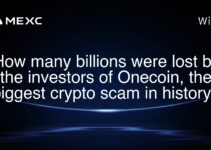Solana is primarily written in Rust, a modern, high-performance programming language known for its safety and concurrency features. Additionally, C and C++ are also used in certain parts of the Solana codebase, particularly for performance-critical components. This combination leverages Rust’s robustness and the established efficiency of C/C++ to create a highly secure and scalable blockchain platform.
Importance of Programming Language in Blockchain Technology
The choice of programming language for a blockchain platform like Solana is crucial for several reasons, impacting everything from system security to developer engagement and overall network performance. For investors, traders, and users, understanding the technical foundation, including the programming language, provides insights into the platform’s long-term viability and potential technological hurdles.
Security and Stability
Rust’s emphasis on memory safety significantly reduces the risk of security vulnerabilities that are common in other systems-level languages like C++. For a blockchain network where security is paramount, this can mean fewer vulnerabilities and a more stable network overall.
Performance and Scalability
Solana’s use of Rust also enhances its performance capabilities. Rust’s efficient handling of concurrency and its compile-time memory management features contribute to Solana’s ability to process transactions quickly and scale effectively, handling tens of thousands of transactions per second as of 2025.
Developer Adoption and Ecosystem Growth
The growing popularity of Rust and its reputation for safety attract a vibrant community of developers. A robust developer community means more innovations, better maintenance, and a richer ecosystem of applications, all of which can enhance the value of the Solana network.
Real-World Examples and Practical Applications
Since its inception, Solana has been applied in various sectors, demonstrating the practical utility of its technology. As of 2025, several high-profile use cases and applications have emerged, showcasing the strengths of its programming foundation.
Decentralized Finance (DeFi)
Solana has become a prominent platform for DeFi applications due to its high throughput and low transaction costs. Platforms like Serum, a decentralized exchange built on Solana, leverage these features to provide fast and cost-effective trading, handling over $3 billion in monthly transactions by mid-2025.
Non-Fungible Tokens (NFTs)
The NFT marketplace on Solana has flourished, driven by its ability to support high transaction volumes and maintain low fees. This has attracted artists and creators from around the world, looking to mint and trade digital assets efficiently. Notably, Solana’s NFT sales volume saw a 150% increase from 2023 to 2025.
Enterprise Solutions
Enterprises have adopted Solana for applications requiring high-speed data processing and secure communications. An example is a partnership with a major telecommunications provider in 2025 to develop a blockchain-based secure messaging service, leveraging Solana’s fast finality and robust security features.
Data and Statistics
The technical capabilities of Solana, underpinned by its programming in Rust, have translated into impressive performance metrics. As of 2025, Solana supports up to 65,000 transactions per second (TPS) with an average transaction cost of $0.00025. This performance is a direct result of the efficiency and speed afforded by Rust, combined with the optimized low-level system operations handled by C/C++.
Conclusion and Key Takeaways
The programming languages used in the development of Solana—primarily Rust, with critical components in C and C++—are integral to its architecture. These choices impact the security, performance, and scalability of the network, which are crucial for its applications in DeFi, NFTs, and enterprise solutions. For investors and users, the robustness of Solana’s technical foundation suggests a promising avenue for both growth and innovation in the blockchain space. Understanding these technical aspects can provide deeper insights into the platform’s potential risks and rewards.
Key takeaways include the importance of Rust in enhancing security and performance, the influence of developer-friendly languages on ecosystem growth, and the real-world applications that demonstrate Solana’s capabilities. As the blockchain landscape continues to evolve, the technical choices made by platforms like Solana will remain central to their success and relevance in the market.
Join MEXC and Get up to $10,000 Bonus!



